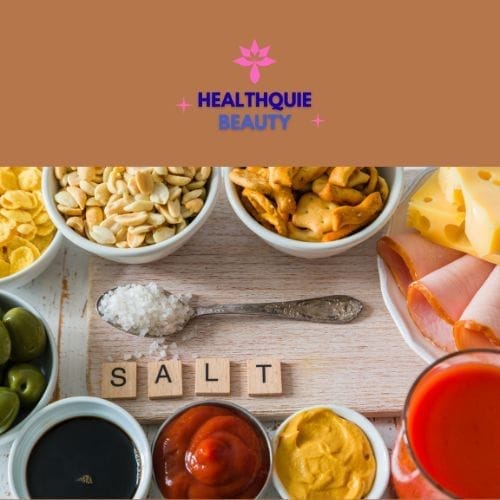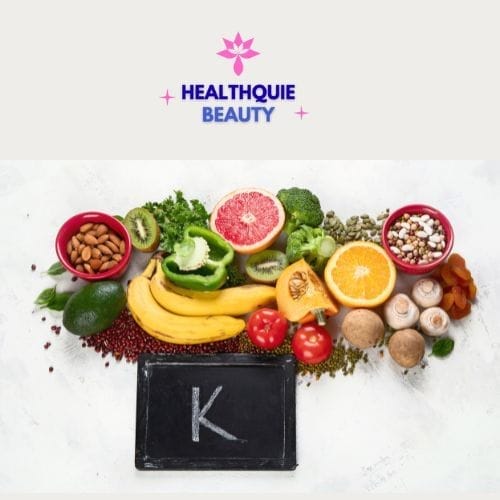
Potassium vs. Sodium: How to Balance Electrolytes for a Healthy Heart

Introduction
Maintaining a healthy balance between potassium and sodium is vital for cardiovascular function. These electrolytes regulate fluid balance, blood pressure, and heart rhythm. Yet, modern diets often provide too much sodium and too little potassium—an imbalance linked to hypertension and heart disease. Let’s explore how each mineral affects the heart and how to strike the right balance for better health.
The Role of Sodium and Its Impact on Heart Health

Physiological Functions:
Sodium is essential for maintaining fluid balance, blood volume, and nerve, muscle, and heart function . It plays a significant role in regulating osmotic equilibrium and pH, and is critical in the sodium–potassium pump that helps cells maintain their electrical stability .

Risks of Excessive Intake:
However, in many populations—particularly in the U.S.—sodium consumption far exceeds recommended limits. The average daily intake is around 3,400 mg, compared to the recommended 1,500–2,300 mg . High sodium promotes fluid retention and blood vessel constriction, elevating blood pressure and raising the risk of heart disease and stroke .
The landmark DASH-Sodium study found that reducing sodium intake (to around 1,500 mg/day) within a DASH-type dietary pattern reduced systolic/diastolic blood pressure by approximately 8.9/4.5 mmHg—even more among hypertensive individuals . Other studies confirm that lowering sodium by just 2 g/day can reduce systolic blood pressure by 2–4 mmHg .
The Heart-Protective Power of Potassium

Mechanisms of Benefit:
Potassium counters sodium’s effects by promoting sodium excretion and relaxing blood vessel walls—thus helping to lower blood pressure . The CDC echoes this: too much sodium and too little potassium elevates blood pressure and increases cardiovascular risk .
Quantifiable Benefits:
Meta-analyses show that potassium supplementation (especially in hypertensive individuals) lowers systolic blood pressure by around 3–3.5 mmHg and diastolic by about 2 mmHg . Moreover, every additional 1 g/day of potassium intake is linked to an 11% lower risk of stroke .
Epidemiological evidence further demonstrates that higher potassium intake reduces cardiovascular events. A Harvard study found that every 1,000 mg increase in potassium excretion was associated with an 18% lower risk of cardiovascular disease; conversely, a 1,000 mg increase in sodium excretion raised risk by 18%.
Another large trial reported that individuals with high sodium (around 4,700 mg/day) had a 60% higher risk of cardiovascular events compared to those with lower sodium (2,200 mg/day), while those with high potassium (~3,500 mg/day) had a 31% lower risk
Beyond Blood Pressure:
Potassium intake also reduces the risk of stroke independently of its blood-pressure-lowering effects. It exerts protective actions on the vascular system, such as reducing oxidative stress and preventing artery-clogging changes
The Key: Sodium–Potassium Ratio Over
Individual Intake
Research increasingly shows that the ratio of sodium to potassium is a stronger predictor of cardiovascular risk than either electrolyte alone .
UCLA Health suggests an ideal dietary ratio of about 3 parts potassium to 1 part sodium, though most Western diets are reversed .
Population-level studies reinforce that a low sodium–potassium ratio reduces the risk for hypertension and heart disease .
Dietary Strategies to Balance Electrolytes

Follow the DASH Diet:
The Dietary Approaches to Stop Hypertension (DASH) emphasizes fruits, vegetables, low-fat dairy, whole grains, lean proteins, and reduced sugars and red meats. It naturally boosts potassium while lowering sodium—and has been repeatedly validated for blood pressure reduction
Increase Potassium-Rich Foods:
Top sources include:
Bananas (≈420–450 mg potassium each), sweet potatoes (>500 mg), leafy greens, apricots, avocados, beans, dairy, potatoes (with skin), and more .
These foods complement lower sodium intake and improve the electrolyte ratio.
Reduce Sodium from Processed Foods:
Most dietary sodium comes from processed and restaurant foods. Emphasize fresh whole foods and read labels for sodium content. Salt substitutes high in potassium can help—unless contraindicated by kidney disease or medications
Clinical Considerations & Cautions
Hyperkalemia Risk: Excess potassium (serum >5.5 mmol/L) can cause palpitations, muscle weakness, and dangerous cardiac arrhythmias; it’s a concern in kidney disease or with certain medications .
Monitoring: Patients with hypertension, heart failure, or on diuretics should have serum potassium and sodium monitored, particularly with supplementation .
Individualized Advice Essential: Always consult a healthcare professional before making significant dietary or supplement changes—especially for those with chronic health issues or on medications.
Conclusion
Balanced sodium and potassium intake is central to heart health:
Limit sodium to 1,500–2,300 mg per day.
Aim for sufficient potassium—around 2,600 mg/day for women, 3,400 mg/day for men, with ideal DASH levels reaching ~4,700 mg/day .
Optimize the sodium–potassium ratio, targeting higher potassium relative to sodium.
Eat whole foods—plenty of fruits, vegetables, legumes, and low-fat dairy—while minimizing processed, high-sodium items.
Monitor and personalize, especially for individuals with health conditions or on medication.
